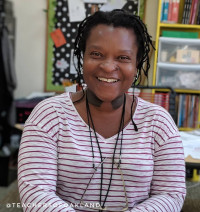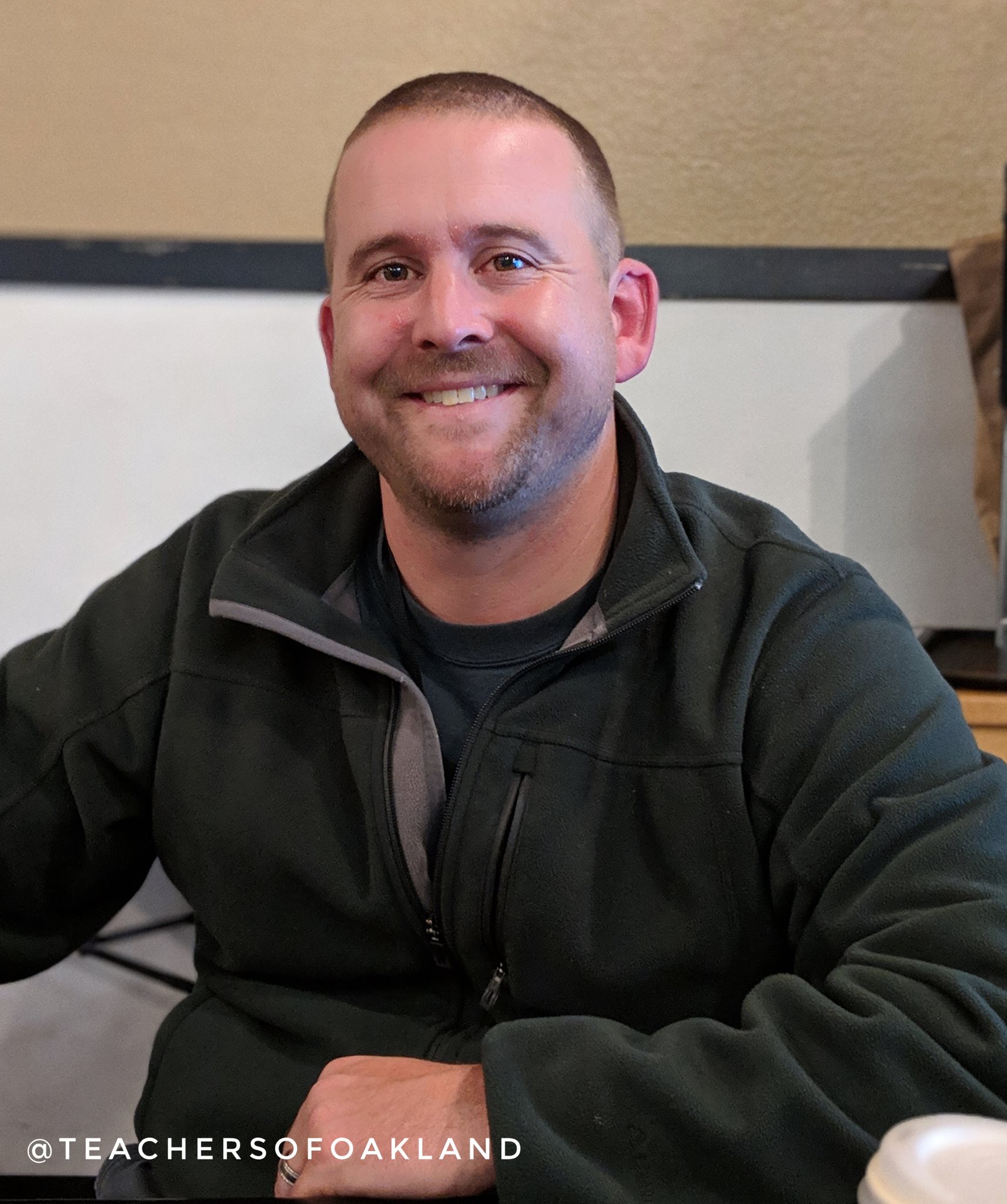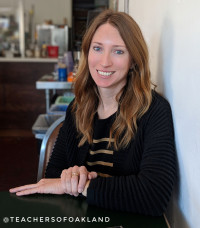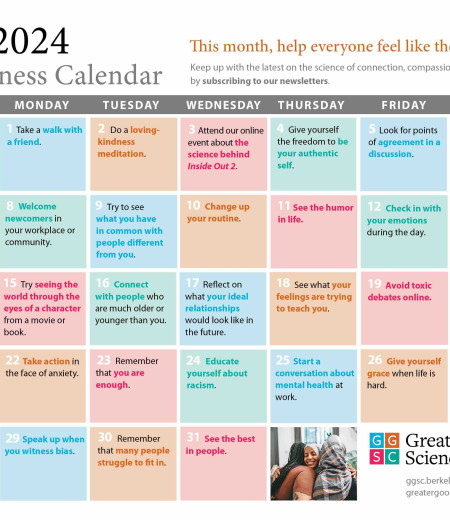Lately, teachers seem to be getting a bad rap. We’ve seen a year-long wave of teacher strikes provoked by deep budget cuts, punctuated by a nationally publicized comment from the president’s son about “loser teachers.”
In the face of such hostility, what can teachers do? Here’s one solution: Tell our stories.
 Om Chitale, founder and executive director of Teachers of Oakland
Om Chitale, founder and executive director of Teachers of Oakland
Why? Because, as any English teacher can tell you, stories help us to understand each other. From a psychological perspective, the parts of the brain involved in story comprehension overlap with those involved in theory of mind (the ability to infer and understand that others can think differently than we do). In fact, studies have found that listening to one person’s story can enhance our empathy, give us a greater sense of purpose and connection, and even inspire compassionate action.
Teachers of Oakland, an organization challenging the broader narrative about our educational system, zooms in on the vivid personal stories of teachers in a way that humanizes them and inspires community support. Highlighting several teachers’ stories per week on social media, Teachers of Oakland offers community members the opportunity to share their appreciation for featured teachers through a “#RaiseYourHand” campaign.
Om Chitale, founder and executive director of Teachers of Oakland, started the organization in order to create more compassionate, just, and supportive communities. “I found that the conversations around education and schools often dehumanized the actors within,” he says. “I wanted to bring the focus back to the adults most critical in our existing education system—the teachers—as community pillars, as whole people.”
Stories enhance empathy
With an onslaught of negative news running through our social media feeds, it’s easy to disengage, get upset, or default to cynicism. Yet emotionally compelling stories seem to draw us in.
Author Jonathan Gottschall claims that stories “teach us about the world while infecting us with emotions.” They serve as “the main cohering force” among us, with the power to change our attitudes and beliefs.
In one recent study, participants who read a news story framed by an individual’s experiences responded more empathically toward both the individual featured and the group they represented, when compared to those who read a non-narrative news story (in other words, one that simply presented information). After reading the narrative, participants also reported more positive intentions toward the individual featured, as well as a desire to seek more information after reading.
“My purpose on this earth is to alleviate the suffering of children”
Readers respond to Teachers of Oakland stories with a similar sense of resonance. “Your story was deeply moving to me,” says one reader. “It was a breath of fresh air to read about your philosophy on teaching and a good reminder to take a step back and remember the humanity of it all, thank you for all you do.” Another reader (an aspiring teacher) commented, “You introduced me to my passion, and I cannot wait to be in the position you are today, making a difference and genuinely overjoyed with life.”
What’s happening in our brains as we have these kinds of responses? Oxytocin is a hormone that enhances empathy (our ability to sense others’ emotions) and our ability to bond with others—and a series of studies have found that “character-driven stories cause oxytocin synthesis,” as researcher Paul Zak writes. So, it’s not surprising that readers and viewers of stories experience empathy similarly to people feeling empathy during everyday face-to-face interactions.
Stories give us purpose
 Nakachi Clark-Kasimu
Nakachi Clark-Kasimu
Stories connect us, but they may also give us a stronger sense of purpose at work and in our community. Paul Zak explains that stories are one of the best ways to communicate a larger, more “transcendent purpose.” And people tend to be much more motivated by their work’s “transcendent purpose” (how it improves lives) than its transactional purpose (how it provides a good or service).
 Sam Petty
Sam PettyEvery Teachers of Oakland interview includes the “why” question: “Why did you become a teacher and what values guide your work?” Nakachi Clark-Kasimu of the North Oakland Community Charter School replied, “My purpose on this earth is to alleviate the suffering of children.”
Sam Petty at the East Oakland Pride Elementary School says that teaching is, in part, an expression of his identity as an Oaklander. “Schools are supposed to be one of the places of consistency in a community,” he says. “I love working here…I will happily teach your children, and that’s just what I’ve always imagined. It’s not just educating children, it’s being part of a community.”
 Emily Macy
Emily Macy
As teachers publicly share what invigorates and drives their work through Teachers of Oakland, they inevitably contribute to building a sense of community—and a common vision. “I think public education is for the common good,” says Emily Macy of Oakland High School. “It’s a good that just about everybody uses. It provides a common ground and space for people to be together and to learn together.”
Om Chitale isn’t a teacher, but when he created Teachers of Oakland, he chose to focus on teachers as community leaders:
This is absolutely a project in bridging power gaps, shrinking opportunity gaps, fighting systemic oppression. Excellent education is a key to bridging those gaps, and teachers are a fundamental part of our education system. So, I’m trying to support teachers better and make sure they’re healthy and well.
Hearing each other’s stories is powerful for teachers, according to Chitale, especially because busy educators don’t often have the time to connect with each other. “They feel validated and energized, and they know they’re not alone in this,” says Chitale, “so they respond by saying, ‘Let me lean further into it. Let me continue.’”
Stories inspire action
But how do stories make us decide to actually reach out and help each other, to offer kindness or gratitude?
Let’s go back to the storytelling research for a moment. The oxytocin produced by emotionally compelling, character-driven stories not only enhances empathy, but also encourages kindness, generosity, and cooperation; in fact, Paul Zak likes to call it the “moral molecule.” In one study, the amount of oxytocin released by the brain actually predicted how much people were willing to help others (e.g., donating money to a charity associated with the narrative).
After reading a Teachers of Oakland post, people have the opportunity to say “thank you” to that teacher in some way. For example, they can purchase a gift card or contribute funds for classroom books or supplies. They can also volunteer time, or simply write a thank you card to a teacher. Most readers choose to express their gratitude through a note, and Chitale explains that’s the easiest thing for people who don’t have resources right now. “They may not have money or time, but they’ve got love and they’ll show it.”
In a recent study, researchers found that people who wrote a gratitude letter reported greater well-being after writing, which ultimately triggered more kindness in the same participants, even six weeks later. Individuals and businesses in Oakland seem to be responding to Teachers of Oakland similarly. Chitale handwrites every thank-you note his readers compose online and delivers them to teachers. He’s written so many that his hand is cramping up these days.
And kindness is spreading across the community. One business initially offered a yoga class for teachers, free of charge. Now, they are offering more classes to more teachers. A massage therapist responded by offering a free massage to a teacher, and one reader decided to invite a teacher to share coffee and conversation on a Saturday morning.
“It’s not just educating children, it’s being part of a community”
Ultimately, Chitale hopes that teachers and community members might begin to take on educational challenges together—to meet regularly to problem-solve and tackle projects of mutual interest. “The whole point is to get people into the work—working with teachers—and not to have siloed versions of solutions.”
Chitale is joyful about the possibilities. “If you’ve invited me to your story, you’ve invited me to who you are,” he says. “Now I feel like I’m connected to you. And now let’s build together.”








Comments